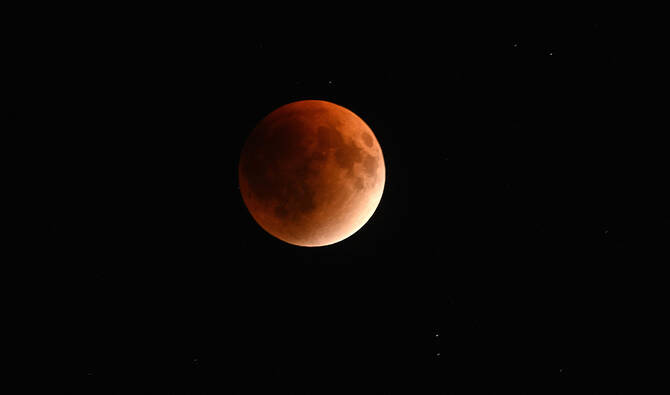Rare Blood Moon lights up skies over Pakistan
A rare celestial spectacle unfolded on Saturday night as a ‘Blood Moon’ illuminated skies across Pakistan during a total lunar eclipse. The eclipse began at 8:28pm with the dimming of the Moon, followed by the partial phase at 9:27pm. The total eclipse occurred at 10:31pm, peaking at 11:12pm before concluding at 1:55am on September 8.

The phenomenon was visible across multiple continents, including Europe, Asia, Africa, Australia, and both North and South America. While stargazers in Europe and Africa managed to catch a partial view as the Moon rose, observers in the Americas missed the total phase.
Experts explained that the Moon turns red during a lunar eclipse because sunlight reaching it is filtered through Earth’s atmosphere, scattering shorter blue wavelengths and allowing longer red ones to dominate. This creates the striking reddish hue, often referred to as a “Blood Moon.”
According to astrophysicist Ryan Milligan of Queen’s University Belfast, the event serves as a prelude to next year’s “big one” — a rare total solar eclipse expected on August 12, 2026, across parts of Spain and Iceland.
The last total lunar eclipse was witnessed in March this year, while the one before that occurred in 2022. Unlike solar eclipses, which require protective glasses for safe viewing, lunar eclipses can be observed with the naked eye under clear skies.
The lunar event also comes ahead of this year’s second and final partial solar eclipse, scheduled for September 21–22, visible from southern Australia, the Pacific Ocean, the Atlantic, and Antarctica.

Read more about science and space updates on MegaNews.tv



